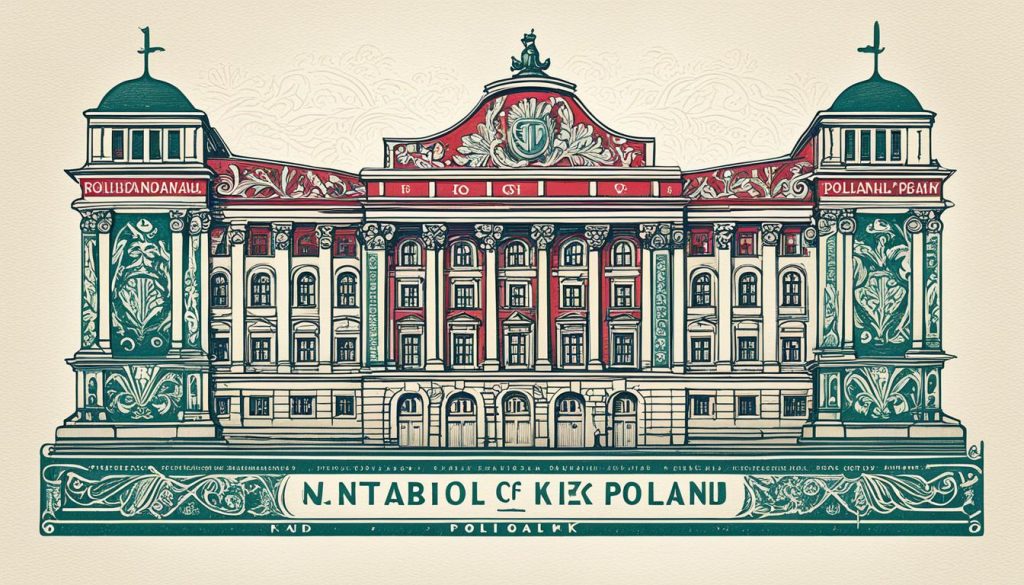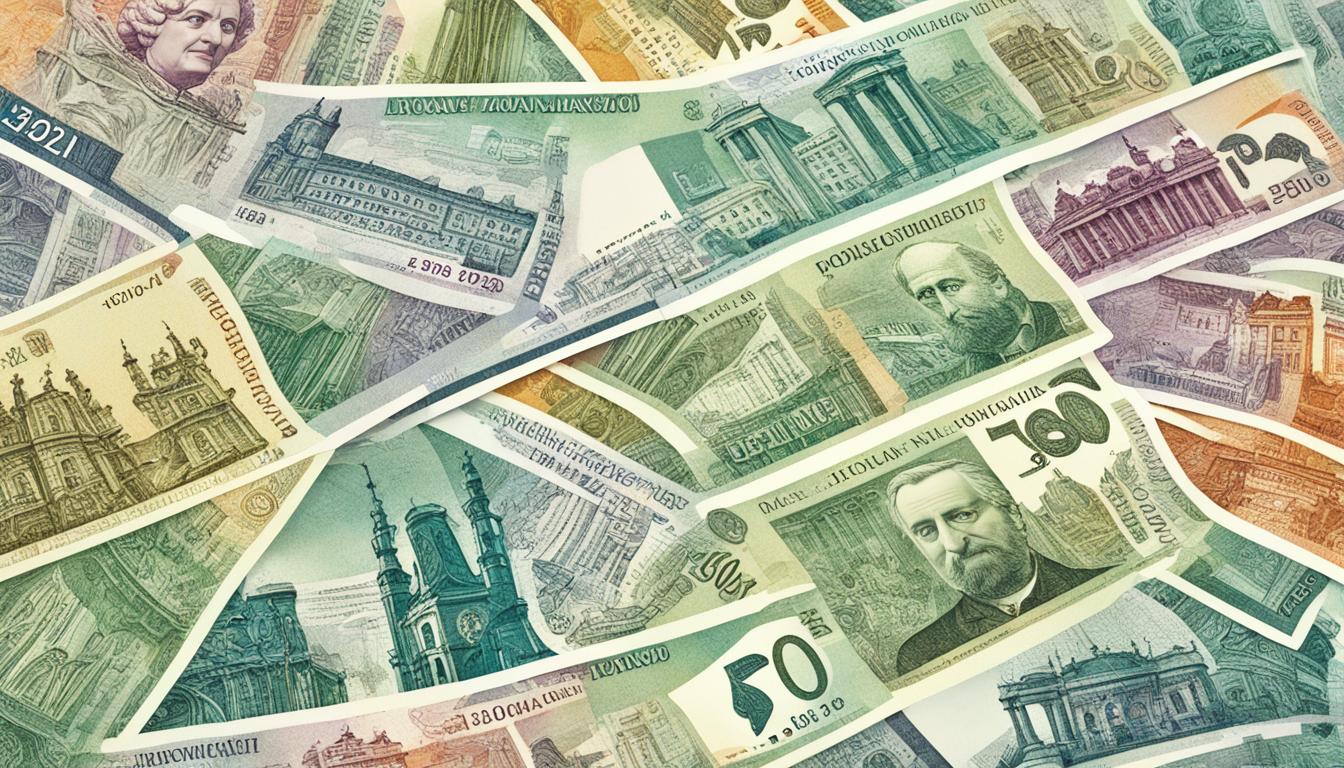Planning a trip to Poland means getting to know the Polish złoty (PLN). Knowing the PLN exchange rate helps visitors understand money value in Poland. They can plan their budget better this way. Polish coins and banknotes unveil parts of the nation’s culture and economy. We want to share key facts about Poland’s currency to help avoid money troubles while abroad.
Key Takeaways
- The Polish złoty (PLN) is the official currency in Poland, pivotal for all transactions within the country.
- Understanding the PLN exchange rate is crucial for financial management and planning during your travels.
- Familiarity with the different Polish currency denominations aids in day-to-day transactions and helps avoid confusion.
- In-depth knowledge of money in Poland can enrich one’s travel experience through a greater appreciation of the nation’s economic context.
- Adapting to the local financial system includes acclimatising to physical and digital payments, providing both ease and efficiency.
An Overview of Poland Currency
The Polish economy shines in Central Europe with its strong and growing currency, the złoty. This currency, consisting of złoty coins and banknotes, shows off the country’s financial health and cultural wealth. We aim to share the special features and artistic touches of Poland’s currency, giving insight into its design and usage.
The National Bank of Poland has a big part in setting the country’s monetary policy. It designs and makes the currency, adding advanced security and national pride through currency design. The banknotes showcase Poland’s history with images of famous historical figures, linking people to their heritage with every purchase.
- The obverse of each banknote highlights key Polish leaders and thinkers.
- On the back, you’ll find major landmarks and symbols of the nation, teaching the public about Poland’s history.
- Złoty coins bear images of well-known Polish figures and historical events, detailed beautifully.
Currency in Poland also includes top security features. These are vital for the financial system’s safety and fighting forgery.
| Denomination | Security Feature | Cultural Significance |
|---|---|---|
| 10 złoty note | Watermark with Duke Mieszko I | Marks Poland’s earliest ruler |
| 20 złoty note | Security thread and microlettering | Shows King Bolesław I the Brave, creator of the złoty |
| 50 złoty note | Holographic stripe | Displays King Casimir III the Great, key to Poland’s fame |
| 100 złoty note | Colour-shifting ink | Pictures King Władysław II Jagiełło, important in Poland-Lithuania history |
| 200 złoty note | See-through register | Features King Sigismund I the Old, figure of the Polish Renaissance |
The National Bank of Poland, as the central bank, ensures the złoty’s stability. It carefully manages Poland’s economy and monetary policy, committed to its role.
Keeping up with worldwide financial trends, the National Bank of Poland looks into new technology. This helps stay ahead in currency design and security, matching global standards.

Understanding Exchange Rates and Using Poland Currency
When visiting Poland, it’s important to understand how to exchange money and use the Polish Złoty. Knowing about currency exchange, PLN rates, and exchange services in Poland can save you money. It makes payments easy whether you’re exploring the culture or doing business.
Finding the Best Exchange Rates
Getting good exchange rates means checking different forex platforms and exchange services in Poland. Watching market trends and using travel money tips will help your budget. Here are some strategies:
- Compare rates from local banks and online currency exchanges.
- Watch the forex market to change money at the best time.
- See if your bank works with Polish banks for better rates.
Cash, Cards, or Digital Payments in Poland?
Poland’s financial infrastructure includes cashless payments and cash. With card acceptance, many ATMs, and mobile payments, visitors have choices.
- Carry cash for small shops or countryside visits.
- Use cards like Visa and Mastercard for safety and ease.
- Try digital payments with apps like BLIK for contactless purchases.
It’s wise to have different payment methods while travelling in Poland.
Spotting Counterfeit Złoty Notes
Even with good counterfeit detection, knowing real Polish banknotes is vital. They have unique banknote security features and anti-counterfeiting measures from the National Bank of Poland.
- Check for watermarks and the security thread in the light.
- Feel the raised print by running your fingers over the note.
- Look for fluorescent elements under ultraviolet light.
Learning about these security features prevents trouble with counterfeit money.
Conclusion
Understanding the Polish złoty is key for anyone exploring Poland’s culture and economy. This article aimed to give a deep insight into the złoty. It covered currency exchange advice, currency types, and tips for the country’s economic scene. The history and current use of the złoty show why financial prep for Poland is vital.
We’ve looked at what impacts the PLN exchange rate, various ways to pay, and how to spot fake money. Knowing this, visitors can handle their finances well in Poland. By keeping an eye on exchange rates and using both digital and cash payments, tourists can enjoy their stay without overspending.
Planning a trip to this culturally rich nation means more than just wanting adventure. You also need a smart money plan. The advice here prepares you for using Poland’s money system confidently, for a smooth and fun trip. Remember to look at the resources mentioned for more info. This will help make your visit to Poland both enjoyable and financially safe.
FAQ
What is the currency used in Poland?
Are there any tips for exchanging money in Poland?
Yes, for the best rates, compare several services. Look into forex trends. Swap money at trusted banks or authorized offices in Poland.
Can you describe the denominations of Polish currency?
Polish money comes in coins and notes. You’ll find 1, 2, 5, 10, 20, and 50 groszy coins. There are also 1, 2, and 5 złoty coins.
Banknotes are in 10, 20, 50, 100, 200, and 500 złoty.
How does the National Bank of Poland influence the PLN exchange rate?
The National Bank sets rates, fights inflation, and steps in on forex markets if needed. This shapes the PLN rate.
Are credit cards widely accepted in Poland?
Credit cards are accepted in cities and big outlets in Poland. Still, have some cash for small places and the countryside.
How prevalent are cashless payments in Poland?
Bank cards, contactless, and mobile payments are on the rise in Poland. Cashless transactions are getting more common.
Is it possible to use ATMs in Poland with a foreign bank card?
Using ATMs with a foreign card in Poland is possible. But, watch out for fees and charges from your home bank.
What should I look out for to spot counterfeit Polish złoty notes?
Look for watermarks, security threads, microprints, and shifting ink to spot fakes. Know how real notes feel and appear.
What are the security features of the złoty coins and banknotes?
Coins have unique sizes, colours, and patterns. Notes have designs, holograms, watermarks, and UV features against fake making.
How can I ensure I’m using the latest and most secure złoty banknotes?
The National Bank of Poland releases new notes with top security features. Use their guidelines to check your złoty notes’ authenticity.



